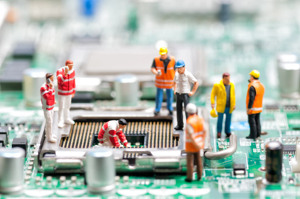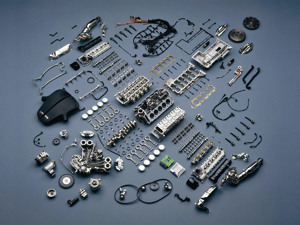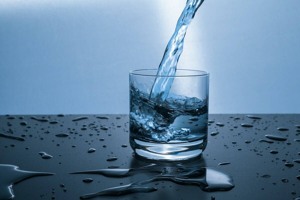Tavex uses cookies to ensure website functionality and improve your user experience. Collecting data from cookies helps us provide the best experience for you, keeps your account secure and allows us to personalise advert content. You can find out more in our cookie policy.
Please select what cookies you allow us to use
Cookies are small files of letters and digits downloaded and saved on your computer or another device (for instance, a mobile phone, a tablet) and saved in your browser while you visit a website. They can be used to track the pages you visit on the website, save the information you enter or remember your preferences such as language settings as long as you’re browsing the website.
| Cookie name | Cookie description | Cookie duration |
|---|---|---|
| tavex_cookie_consent | Stores cookie consent options selected | 60 weeks |
| tavex_customer | Tavex customer ID | 30 days |
| wp-wpml_current_language | Stores selected language | 1 day |
| AWSALB | AWS ALB sticky session cookie | 6 days |
| AWSALBCORS | AWS ALB sticky session cookie | 6 days |
| NO_CACHE | Used to disable page caching | 1 day |
| PHPSESSID | Identifier for PHP session | Session |
| latest_news | Helps to keep notifications relevant by storing the latest news shown | 29 days |
| latest_news_flash | Helps to keep notifications relevant by storing the latest news shown | 29 days |
| tavex_recently_viewed_products | List of recently viewed products | 1 day |
| tavex_compare_amount | Number of items in product comparison view | 1 day |
| Cookie name | Cookie description | Cookie duration |
|---|---|---|
| chart-widget-tab-*-*-* | Remembers last chart options (i.e currency, time period, etc) | 29 days |
| archive_layout | Stores selected product layout on category pages | 1 day |
| Cookie name | Cookie description | Cookie duration |
|---|---|---|
| cartstack.com-* | Used for tracking abandoned shopping carts | 1 year |
| _omappvp | Used by OptinMonster for determining new vs. returning visitors. Expires in 11 years | 11 years |
| _omappvs | Used by OptinMonster for determining when a new visitor becomes a returning visitor | Session |
| om* | Used by OptinMonster to track interactions with campaigns | Persistent |
| Cookie name | Cookie description | Cookie duration |
|---|---|---|
| _ga | Used to distinguish users | 2 years |
| _gid | Used to distinguish users | 24 hours |
| _ga_* | Used to persist session state | 2 years |
| _gac_* | Contains campaign related information | 90 days |
| _gat_gtag_* | Used to throttle request rate | 1 minute |
| _fbc | Facebook advertisement cookie | 2 years |
| _fbp | Facebook cookie for distinguishing unique users | 2 years |
What Is Silver Used For? [Full guide written by a silver expert!]

In this comprehensive guide, we take a look at silver and its role in various industries as well as its cultural significance. As industry experts at Tavex, we have extensive experience working with silver and can provide a good picture of how silver is used in technology, healthcare, industrial sectors and everyday life.

Silver’s industrial applications
Silver is an important metal in various industrial sectors, thanks to its unique properties that make it a valuable component in modern technology and manufacturing processes. Here we take a closer look at the most important applications of silver in the industrial landscape:
Electronics and conductivity

Silver is an important component in modern devices and systems. Its high conductivity and thermal properties make it an important metal in the electronics industry. Here’s how silver’s conductivity contributes to innovation and electronic performance:
- Electrical Connectors and Connectors: Silver’s low electrical resistance allows for efficient current flow, making it excellent for electrical connectors and connectors. These important components ensure connection and transmission of signals within electronic circuits. This is important for smartphones, computers and household appliances.
- Switches and relays: Silver’s good conductivity is also used for switches and relays, which play an important role in controlling electrical circuits. By using silver in these components, electronic systems can handle higher currents and efficiently handle power distribution.
- Printed Circuit Boards (PCBs): Printed circuit boards form the backbone of electronic devices and provide a platform for various components to be interconnected. Silver is often used in PCBs as conductive traces, allowing the efficient flow of electrical signals between different parts of the circuit.
- Power electronics: In power electronics, where efficient power conversion and power distribution are essential, silver is often the first choice. It is used in power semiconductors, such as diodes, due to its low resistance and ability to handle high currents.
- Light Emitting Diodes: Silver is used in light emitting diodes (LEDs) and other devices that contribute to electrical connections and efficient light emission. The conductivity of silver plays an important role in ensuring consistent and reliable lighting.
Silver plays an important role in advancing technology and driving innovations that shape our modern lives. Silver’s exceptional electrical conductivity , combined with its compatibility with other materials, makes it an irreplaceable asset in the electronics industry, driving development and moving us towards a more connected and efficient future.
Do you want to know more about investment silver from Tavex? Click here!
Healthcare and antimicrobial properties
Silver has historically been known for its antimicrobial properties, making it an important asset in medicine. These properties have been used to create medical devices and products that play a critical role in preventing infection and promoting healing.
- Cleaning wounds: Silver is often used to clean wounds and to create antimicrobial dressings. These dressings help reduce the risk of infection in wounds by releasing silver ions that inhibit the growth of bacteria and other microorganisms. By creating an environment hostile to pathogens, silver-infused wound dressings accelerate the healing process and protect the wound from potential complications.
- Catheters and surgical instruments: In healthcare, catheters and surgical instruments can be breeding grounds for harmful bacteria. Silver-coated catheters and instruments help reduce this risk by effectively reducing bacterial colonisation. This not only prevents potential infections but also reduces the risk of complications during medical procedures.
- Burn and Trauma Care: For patients with severe burns or traumatic injuries, infection prevention is critical. Silver-based creams and ointments are used to protect burns and open wounds from infection. These treatments contribute to tissue regeneration and minimise the risk of infections that can further disrupt the healing process.
- Implants and prostheses: When it comes to medical implants and prostheses, the risk of infection is a major concern. Silver-coated implants and prostheses reduce this risk by providing a protective barrier against pathogens, ensuring the success and longevity of these life-changing medical procedures.
Silver’s antimicrobial properties have revolutionised healthcare by providing healthcare professionals with effective tools to prevent infections and promote better patient outcomes. Silver’s lasting impact on the healthcare industry continues to shape the way we view patient care and underscores the importance of harnessing nature’s powerful resources to advance human health.
Silver in the automotive industry

Silver’s influence extends to the automotive industry, where its unique properties act as a cornerstone for important components and systems.
- Airbag sensors: In modern cars, airbag sensors play an important role in passenger safety. These sensors rely on silver-plated electrical contacts to read rapid braking to trigger the airbags. The reliability and conductivity of the silver contacts ensure that the sensors react correctly and quickly to protect the occupants in case of sudden collisions.
- Spark plugs: The ignition system is the heart of all internal combustion engines. Silver plays an important role in spark plugs, where it is used to coat the central electrode. The silver-coated electrode increases spark intensity and longevity, leading to efficient fuel combustion and optimal engine performance.
- Electrical connectors: Electrical connectors are important in the automotive industry and facilitate the flow of electricity within various systems, e.g. lighting, electronics and power distribution. Silver’s excellent electrical conductivity, combined with its corrosion resistance, makes it an ideal material for electrical contacts. From switches to connectors, silver ensures reliable electrical flow, contributing to the vehicle’s overall functionality.
- Battery technology: Silver is also used in advanced vehicle batteries. Silver-based materials are used as current collectors, improving the battery’s efficiency and energy storage capacity. These advances play an important role in the development of electric vehicles and sustainable transport solutions.
- Thermal conductivity: In addition to the electrical properties, silver’s exceptional thermal conductivity is used in car cooling systems. Silver-plated radiators and heat exchangers effectively dissipate excess heat, preventing overheating and ensuring optimal engine performance.
Silver’s important role in automotive and electrical engineering underscores its status as a critical metal for driving technological innovation. As the automotive industry evolves towards more sustainable and efficient solutions, silver continues to play a key role in the design of tomorrow’s vehicles and systems.
Water purification

Silver’s exceptional antimicrobial properties make it a key player in water purification, protecting the health and well-being of communities worldwide.
- Filters and membranes: In water purification systems, silver is used in filters and membranes. These innovative components utilise the biocidal effect of silver to neutralise harmful bacteria and microorganisms found in water sources. As the water passes through these filters, the metal’s antimicrobial action eliminates potential pathogens, ensuring that the water is safe to drink.
- Disinfection and safe drinking water: The use of silver in water purification helps prevent waterborne diseases and ensures access to clean drinking water. By killing bacteria and inhibiting their growth, silver acts as a powerful disinfectant that maintains the purity and safety of drinking water for communities, especially in regions where waterborne diseases pose significant health risks.
- Community health and well-being: Access to clean and safe drinking water is a basic human right and plays a critical role in promoting community health and well-being. Silver’s contribution to water purification technology is a testament to its profound impact on public health, particularly in regions facing water quality and sanitation challenges.
Silver’s cultural and symbolic significance

Beyond its practical uses, silver has had a profound cultural and symbolic meaning throughout history, making it a prized metal in various cultures and societies. Let’s take a closer look at some of the ways silver has survived time and become a symbol of beauty, purity and achievement:
- Jewellery: Silver’s luster and malleability have made it a popular choice for making jewellery and ornaments. From designer necklaces and earrings to elegant bracelets and rings, silver has adorned individuals for centuries.
- Cultural Religious Objects: In various civilisations, silver has been used to make cultural artefacts and religious objects. Its use in religious ceremonies, statues and sacred objects reflects its valued place in rituals and spiritual practices.
- Coins, Medals and Awards: Silver’s historical use as currency reflects its universal acceptance and enduring value. In the past, silver coins were a common medium of exchange, and even today they are an important component in the minting of commemorative medals and prestigious awards.
- Art and design: The captivating shine of silver has inspired artists and craftsmen throughout history. It has been used in fine silverware, decorative objects and artistic masterpieces, bringing elegance to art and design.
- Cultural traditions and festivals: In various cultures, silver plays a central role in traditional celebrations and festivals. It is often used to create intricate and ceremonial objects that have deep cultural significance.
- Status and Social Significance: The rarity and beauty of silver has historically been associated with status and wealth. Owning silver objects or being adorned with silver jewellery means wealth and prestige.
Silver’s allure in cultural and symbolic contexts is testament to its timeless appeal. As we discover its cultural significance, we gain a deeper understanding of the profound impact that silver has had on the human experience, transcending boundaries and generations with its universal appeal.
Do you want to know more about investment silver from Tavex? Click here!
Silver’s applications stretch far and wide, from advancing technology to enhancing the healthcare sector, driving automotive innovations, ensuring clean water, and even holding cultural and symbolic significance. Its multifaceted uses make it not only an important industrial component but also a treasured element deeply embedded in human history and traditions. As we continue to innovate and evolve, silver’s role remains central, bridging our past and future, and ensuring a brighter, safer, and more connected world.


















